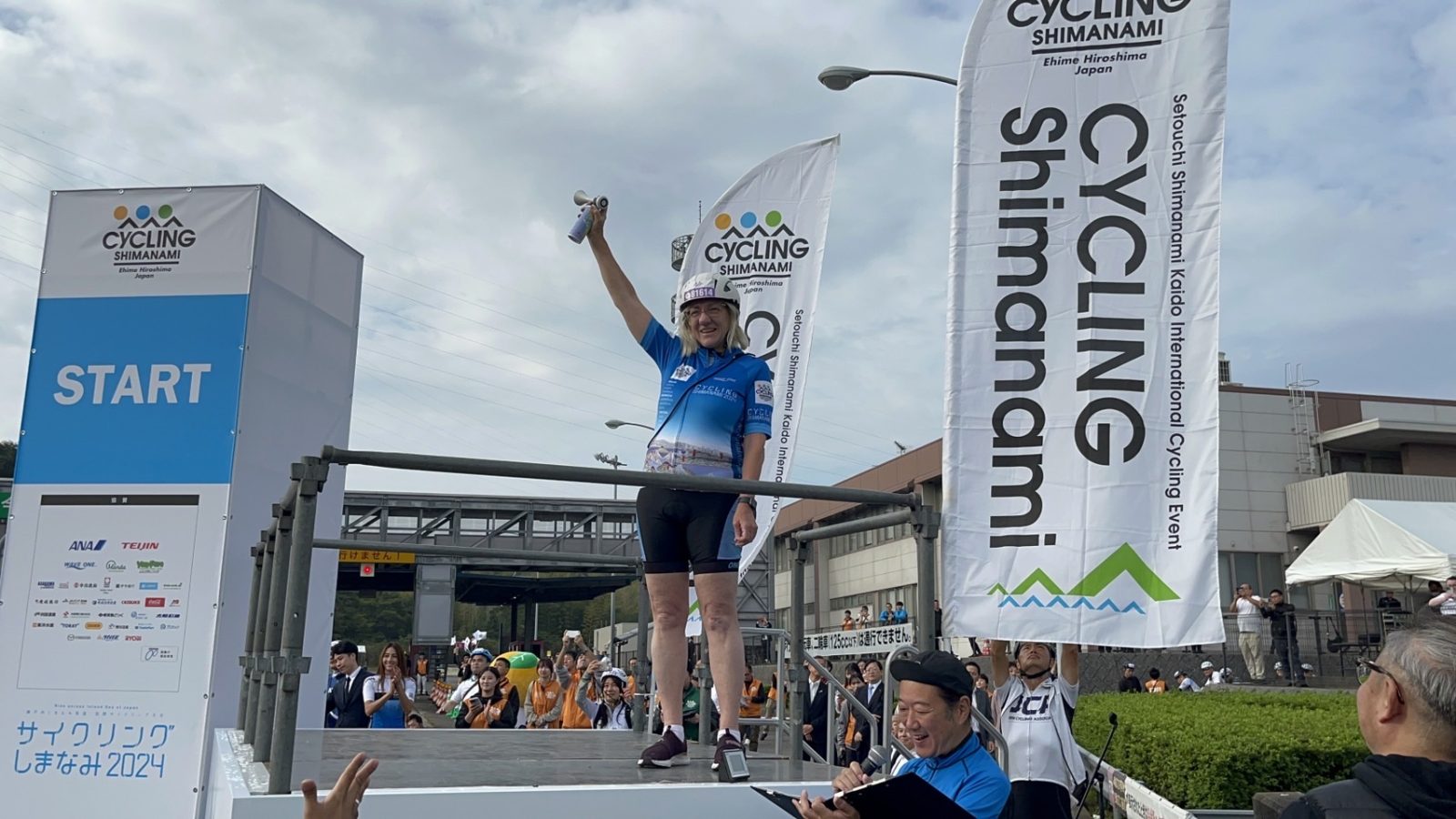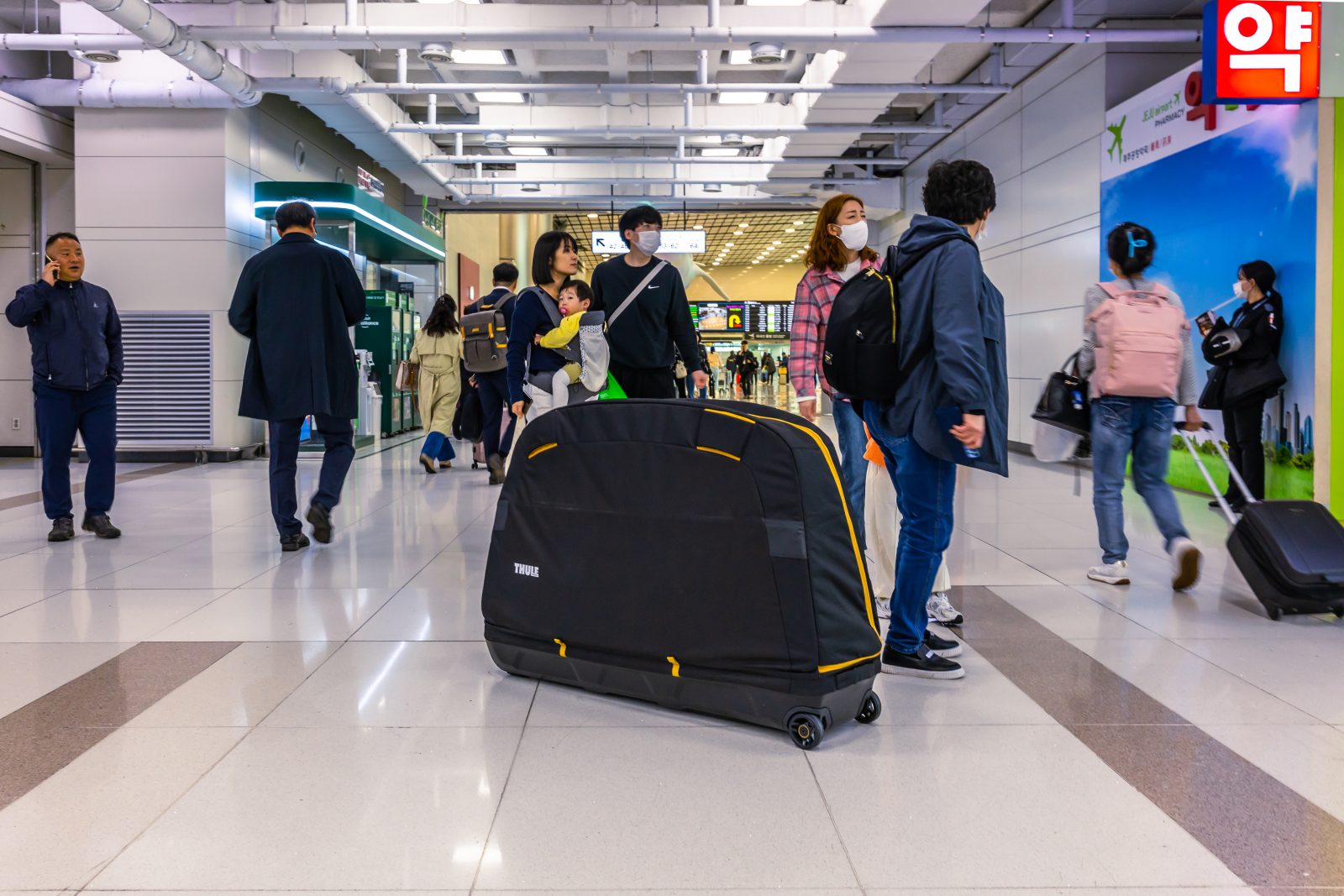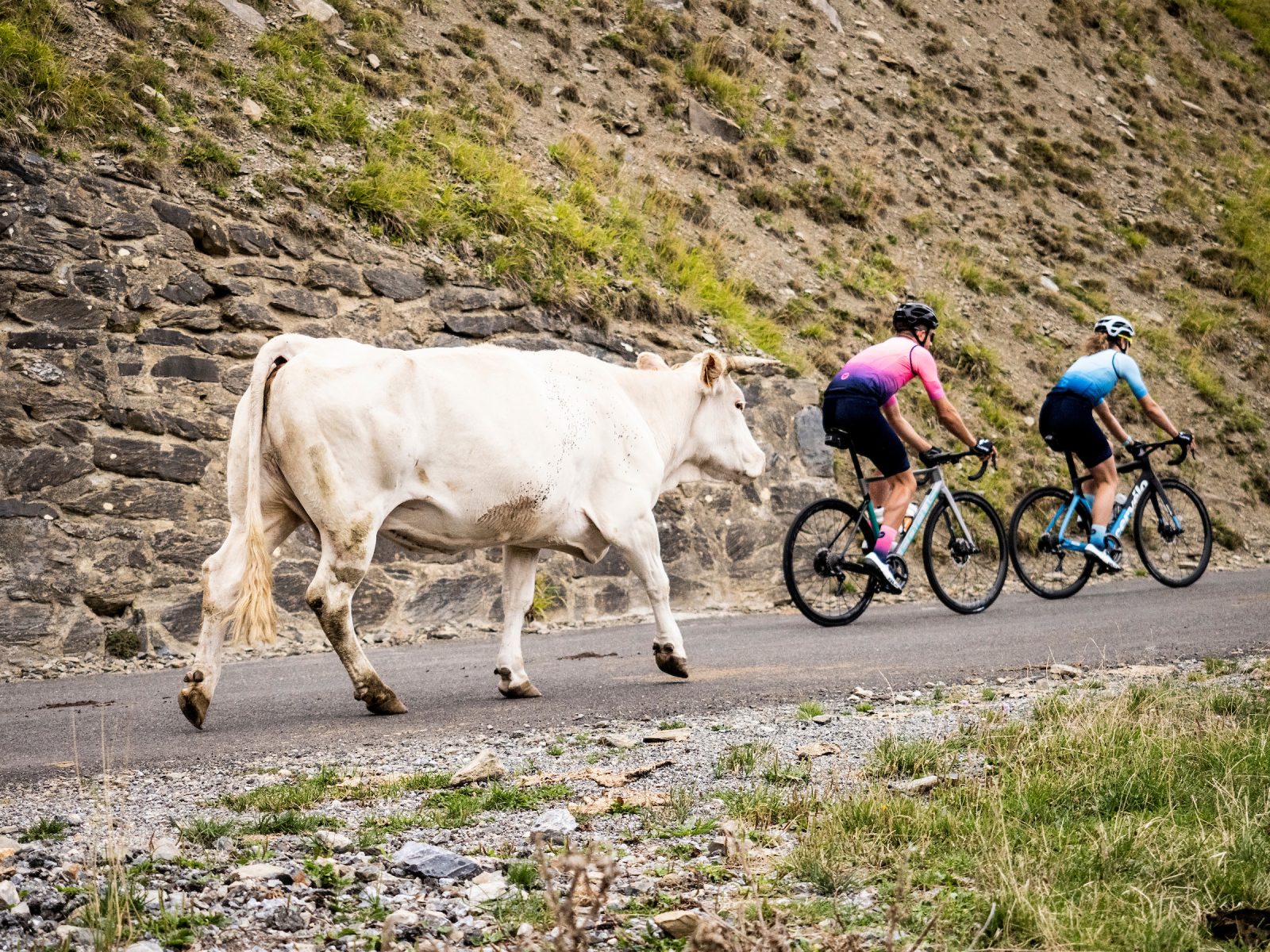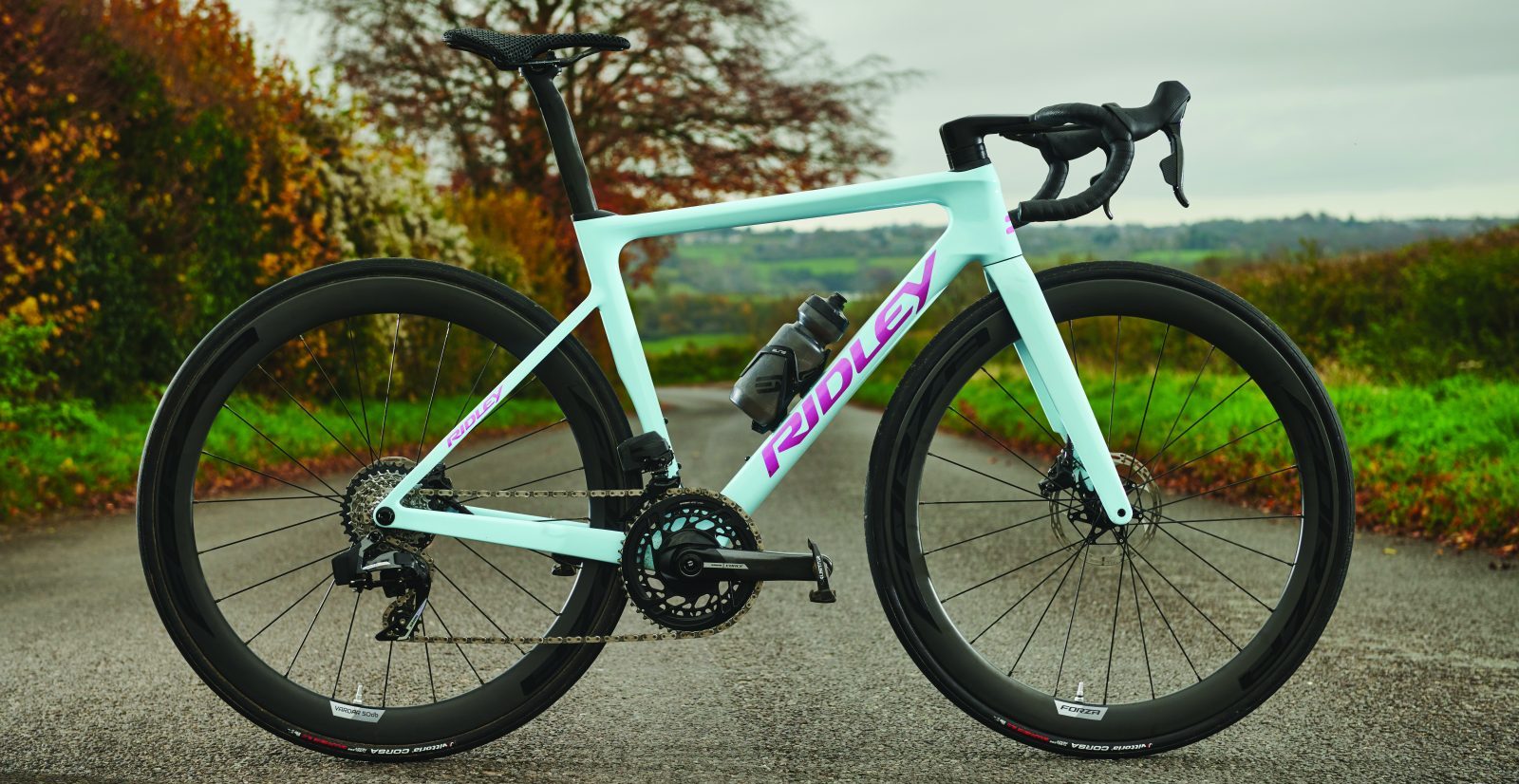Melinda Tarrant, President of Bicycle NSW, discusses her experiences with the Shimanami Kaido ride in Japan, the organisation of the “Cycling Shimanami 2024” event, and the impact of such events on the cycling industry and regional development.
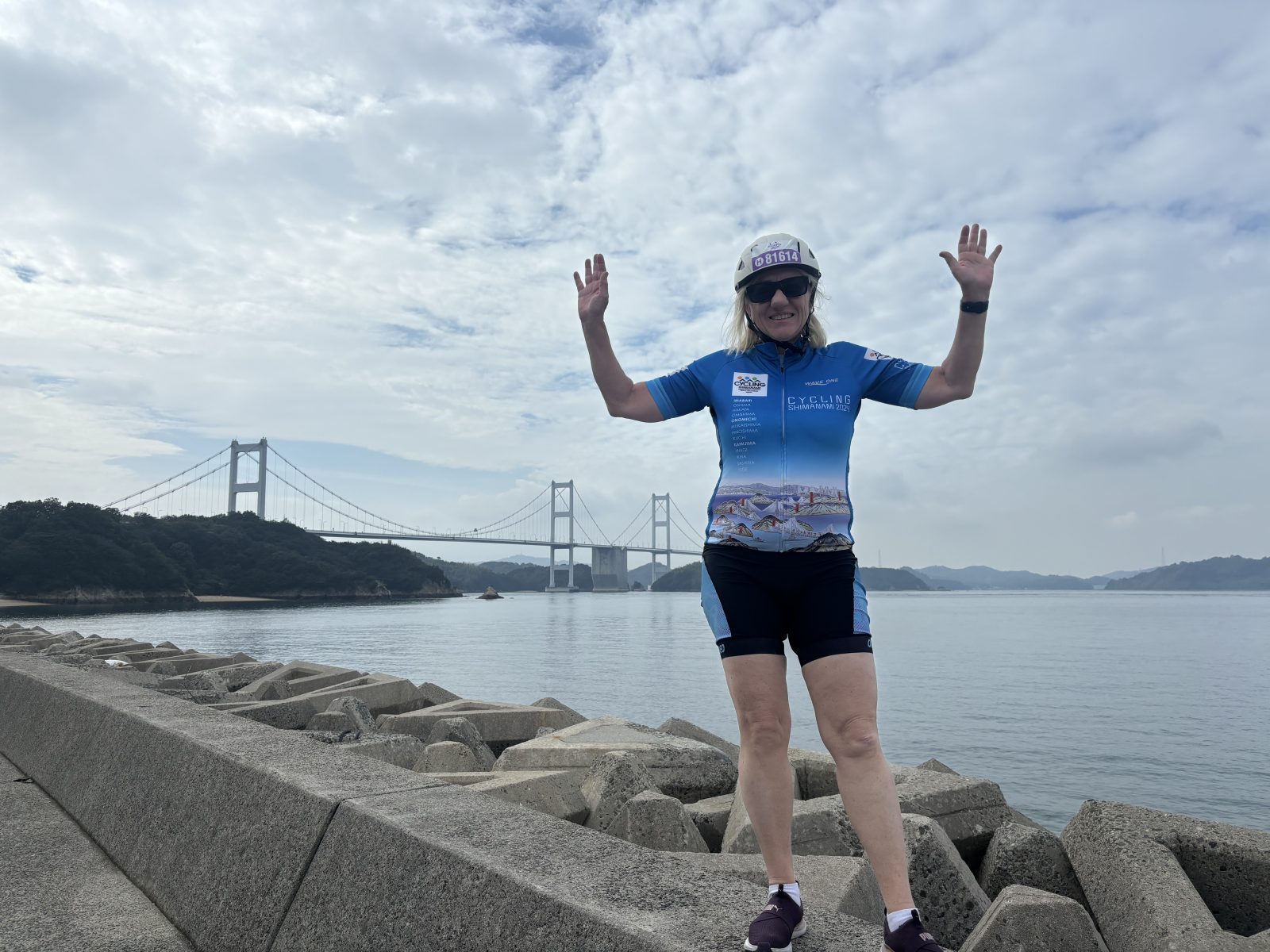
Along Course H, Melinda stands on Oshima Island with a wonderful view of the Kurushima-Kaikyo Bridge.
Cyclist: Hey Melinda. Could you briefly share your professional background and experience with us?
Melinda Tarrant: I have been involved with cycling since 2012 when I joined Cycling Australia (now AusCycling) as their chief operating officer.
During my time there I was involved in bringing the “She Rides” program to life, which was designed as a training program to get women riding socially, recreationally and commuting. I joined one of the initial groups to gain a better understanding of the program and provide feedback to ensure it would meet the needs and expectations of our program participants.
After not riding a bike for a number of years since teaching my children to ride, not very successfully and a couple of scars later, I rediscovered my love of the sense of freedom you get when you jump on the bike.
In 2014 I joined the Board of Bicycle NSW, the peak advocacy body for the state of New South Wales, which works with the state and local governments and councils to enact positive change to ensure safe and enjoyable active transport.
One of the key learnings from the training program and my work with Bicycle NSW is that most women don’t ride as often as they would like, or at all, due to the aggressive behaviour of drivers, particularly in Sydney. We aim to change that by making it safer to ride by advocating for better infrastructure, the enactment of legislation such as the Minimum Passing Distance laws, and rider education.
I’m pleased to say that we have seen a marked increase in rider numbers amongst women since then. I was a daily commuter to the Sydney CBD, travelling about 20km a day for five years until Covid and retirement.
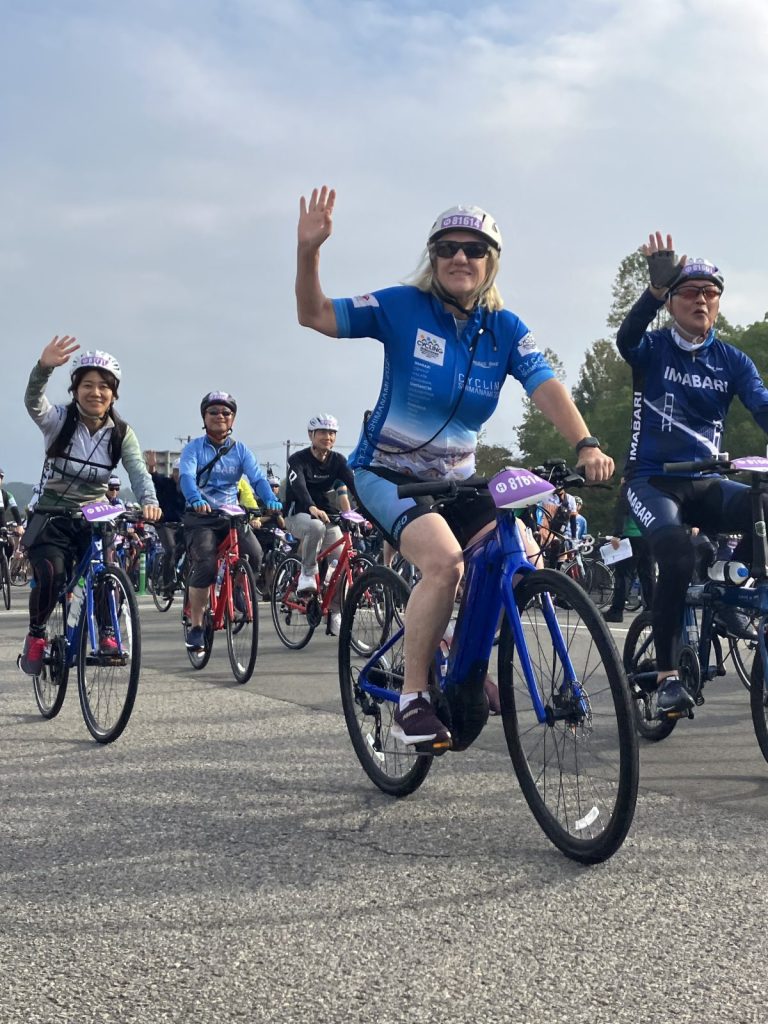
Melinda at the start line of Cycling Shimanami 2024.
Cyc: What was your experience like riding the Shimanami Kaido? Could you share what aspects of cycling on the Shimanami Kaido?
MT: I am a regular traveller to Japan and also lived and worked in Tokyo from 2008-2010, but this was my first cycling experience in Japan – and what a wonderful way to start!
We rode over the Kurushima-Kaikyo Bridge, the longest suspension bridge on Shimanami Kaido, to Oshima Island. The views from the bridges are just spectacular and the riding is so enjoyable on lovely wide roads and then along the sea side.
I was a little nervous about the gradient for riding onto the bridge but actually the amazing engineering with the circular ramp made it very easy and not a struggle at all.
The very special experience of riding out with the large group over the ETC, which is only closed on the day of Cycling Shimanami, was magical and, as is expected in Japan, everyone was very polite, cheerful and enthusiastic, which made it a great experience riding in the bunch.
There were a number of excellent photo opportunities along the way and even cultural experiences, including drumming conducted by young people from the local area.
I highly recommend anyone come to the region, whether to do the ride on their own along the well marked route or attend the organised event.
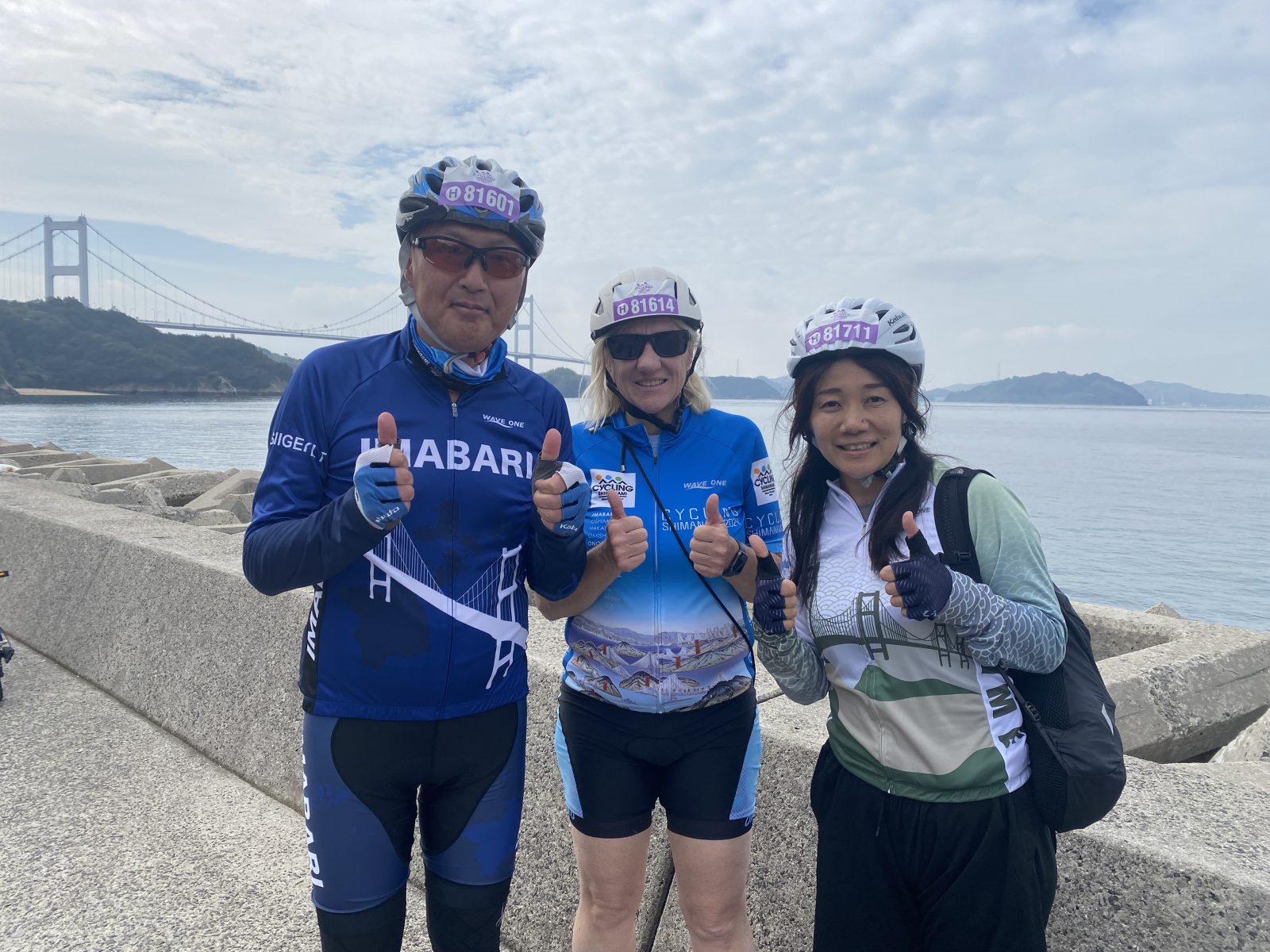
With Mayor of Imabari City, Mr Shigeki Tokunaga (left).
Cyc: How was the Cycling Shimanami 2024 event for you?
MT: The event was meticulously organised so that every possible question was taken care of for the riders. This was not just a cycling event; it was an opportunity to immerse yourself in Japanese culture, and it was certainly more formal than anything you will find in Australia.
For anyone visiting Japan for the first time, they will find it so easy to navigate the hiring of a bike, finding the start line and even choosing which ride they want to do before they register. Everything is covered in the comprehensive welcome pack.
The pre-event dinner and the opportunity to meet with the Governor beforehand were special highlights which don’t normally happen with cycling events.
The one thing that stands out most in my mind is the food! There was so much of it, and it was delicious tasting the local specialities. I definitely need to choose a longer ride next time to ride it all off.
Cyc: Bicycle NSW organises the Spring Cycle event. How do you think cycling events like “Cycling Shimanami” and the Spring Cycle influence both the cycling industry and regional development?
MT: Cycle Tourism is a great opportunity to promote new regions to future travellers. Although I have travelled extensively in Japan, I had not been to the Ehime region and I was able to spend several days travelling around the island, and I also brought two of my daughters with me. Likewise, Spring Cycle attracts visitors to Sydney from other parts of Australia as well as overseas.
One of the things that the Cycling Shimanami event showcased was many other rides throughout Japan and I have a number now on my bucket list, as well as regions outside Japan who came along to promote their events.
I gained a number of ideas from attending Cycling Shimanami which we will leverage in Spring Cycle. One of those is to provide the opportunity to other regional areas within NSW as well as overseas events organisers to come to Spring Cycle and promote their events in the post-ride village.
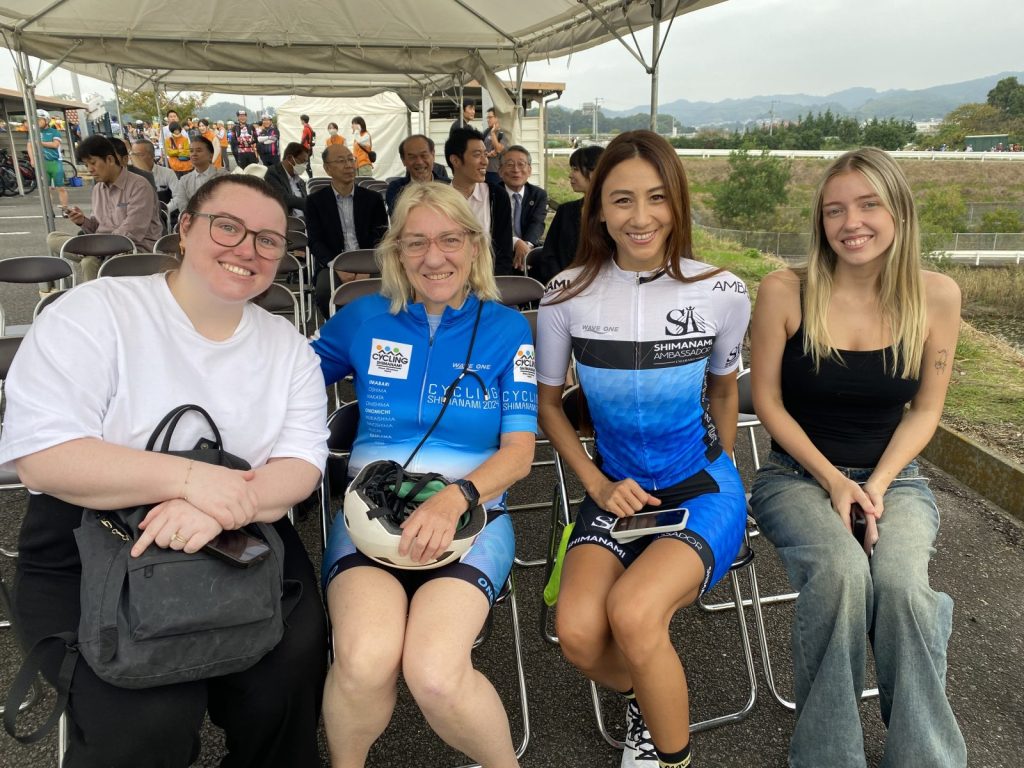
At the start ceremony, with guest Karen Michibata (second from the right).
Cyc: In August 2024, Bicycle NSW signed a memorandum of understanding with Ehime Prefecture to promote exchanges. In light of this, are there any new initiatives you’d like to explore with Ehime, or ways you plan to further strengthen the collaboration with the prefecture?
MT: Now that I’ve had the opportunity to ride the event myself, it will help us to better promote the ride to Bicycle NSW members in future years. Also, by understanding how Japanese events are run, we can learn how to do things in a way that will encourage more people from Japan to come to the Spring Cycle.
We intend to keep up regular communications so we can learn from each other and work together cooperatively to continue to promote and encourage riding in all its forms and demonstrate to governments the benefits of riding for tourism but also for health, social enjoyment and the environment.
Cyc: Looking ahead, are there any specific projects or initiatives that Bicycle NSW is particularly focused on for the future?
MT: Bicycle NSW priorities in 2025 will focus on raising awareness and understanding of the minimum passing distance legislation and it’s pleasing to see we received a small grant to help deliver this.
In addition, we will continue to make bicycle riding easier for more people including beginners, children and women through advocating for improved infrastructure and amenities as well as of course greater funding to ensure Councils can deliver this infrastructure.
We’ve achieved some very exciting advocacy outcomes in Sydney recently including the start of construction for the Sydney Harbour Bridge North Cycle Ramp. Therefore, our priority will now move onto other iconic projects as well as how we can support regional areas to develop outstanding bicycle tourism destinations for people to visit and experience Australia.
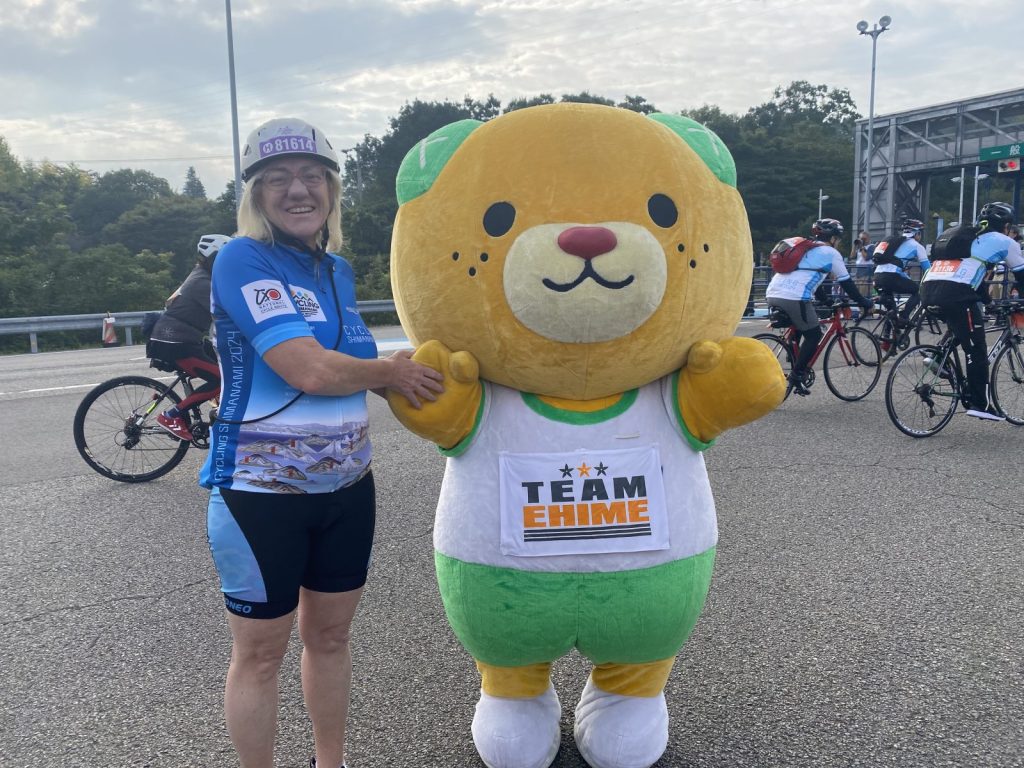
Melinda shares a handshake with Ehime Prefecture’s favourite character, Mican.
